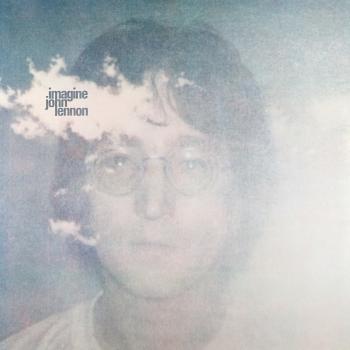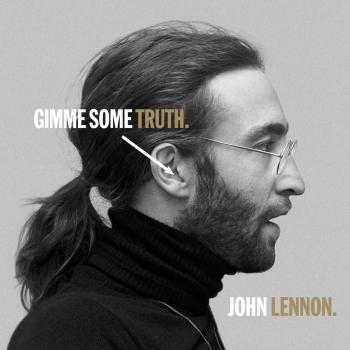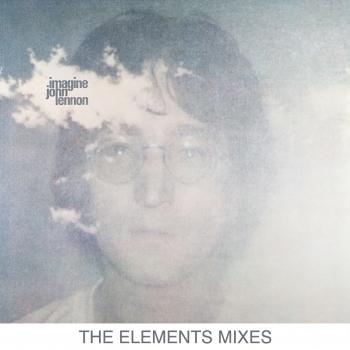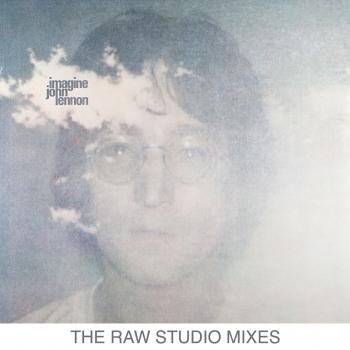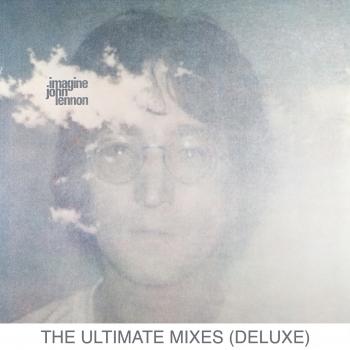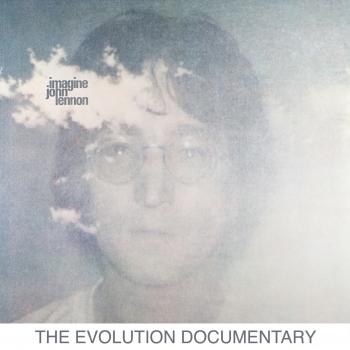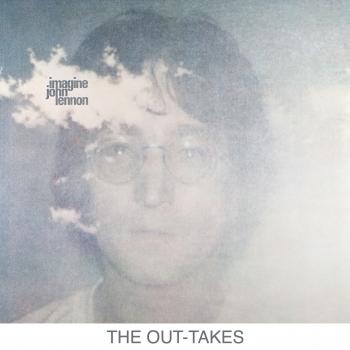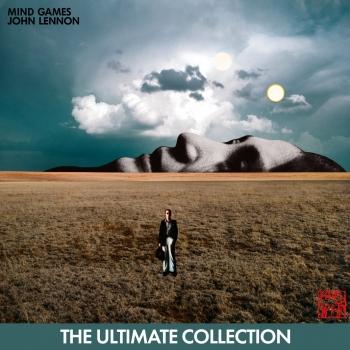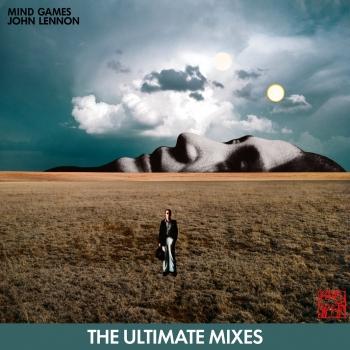
Signature Box (Remastered) John Lennon
Album info
Album-Release:
2014
HRA-Release:
12.09.2017
Album including Album cover
I`m sorry!
Dear HIGHRESAUDIO Visitor,
due to territorial constraints and also different releases dates in each country you currently can`t purchase this album. We are updating our release dates twice a week. So, please feel free to check from time-to-time, if the album is available for your country.
We suggest, that you bookmark the album and use our Short List function.
Thank you for your understanding and patience.
Yours sincerely, HIGHRESAUDIO
- 1 Mother 05:35
- 2 Hold On 01:52
- 3 I Found Out 03:38
- 4 Working Class Hero (Lennon Legend Version) 03:48
- 5 Isolation 02:52
- 6 Remember 04:33
- 7 Love 03:22
- 8 Well Well Well 05:57
- 9 Look At Me 02:54
- 10 God 04:12
- 11 My Mummy's Dead 00:50
- 12 Imagine 03:07
- 13 Crippled Inside 03:53
- 14 Jealous Guy 04:18
- 15 It's So Hard 02:29
- 16 I Don't Wanna Be A Soldier Mama 06:09
- 17 Gimme Some Truth 03:18
- 18 Oh My Love 02:48
- 19 How Do You Sleep? 05:39
- 20 How? 03:46
- 21 Oh Yoko! 04:17
- 22 Woman Is The Nigger Of The World 05:18
- 23 Sisters, O Sisters 03:49
- 24 Attica State 02:57
- 25 Born In A Prison 04:03
- 26 New York City 04:40
- 27 Sunday Bloody Sunday 05:03
- 28 The Luck Of The Irish 02:57
- 29 John Sinclair 03:34
- 30 Angela 04:05
- 31 We're All Water 07:14
- 32 Cold Turkey (Live) 08:35
- 33 Don't Worry Kyoko (Live) 16:06
- 34 Well (Baby Please Don't Go) (Live) 04:41
- 35 Jamrag (Live) 05:36
- 36 Scumbag (Live) 04:27
- 37 Au (Live) 08:08
- 38 Mind Games 04:12
- 39 Tight A$ 03:39
- 40 Aisumasen (I'm Sorry) 04:45
- 41 One Day (At A Time) 03:11
- 42 Bring On The Lucie (Freda Peeple) 04:12
- 43 Nutopian International Anthem 00:04
- 44 Intuition 03:11
- 45 Out The Blue 03:23
- 46 Only People 03:29
- 47 I Know (I Know) 03:51
- 48 You Are Here 04:13
- 49 Meat City 02:52
- 50 Going Down On Love 03:56
- 51 Whatever Gets You Thru The Night 03:28
- 52 Old Dirt Road 04:13
- 53 What You Got 03:09
- 54 Bless You 04:37
- 55 Scared 04:41
- 56 #9 Dream 04:47
- 57 Surprise Surprise (Sweet Bird Of Paradox) 02:57
- 58 Steel And Glass 04:40
- 59 Beef Jerky 03:31
- 60 Nobody Loves You (When You're Down And Out) 05:13
- 61 Ya Ya 01:08
- 62 Be-Bop-A-Lula 02:37
- 63 Stand By Me 03:31
- 64 Rip It Up / Ready Teddy 01:35
- 65 You Can't Catch Me 04:54
- 66 Ain't That A Shame 02:34
- 67 Do You Want To Dance 02:54
- 68 Sweet Little Sixteen 03:04
- 69 Slippin' And Slidin' 02:18
- 70 Peggy Sue 02:05
- 71 Bring It On Home To Me / Send Me Some Lovin' 03:42
- 72 Bony Moronie 03:51
- 73 Ya Ya (Alternative Version) 02:18
- 74 Just Because 04:26
- 75 (Just Like) Starting Over 03:57
- 76 Kiss Kiss Kiss 02:42
- 77 Cleanup Time 02:59
- 78 Give Me Something 01:35
- 79 I'm Losing You 03:58
- 80 I'm Moving On 02:21
- 81 Beautiful Boy (Darling Boy) 04:06
- 82 Watching The Wheels 04:00
- 83 Yes, I'm Your Angel 03:10
- 84 Woman 03:33
- 85 Beautiful Boys 02:55
- 86 Dear Yoko 02:35
- 87 Every Man Has A Woman Who Loves Him 04:02
- 88 Hard Times Are Over 03:20
- 89 I'm Stepping Out 04:06
- 90 Sleepless Night 02:34
- 91 I Don't Wanna Face It 03:22
- 92 Don't Be Scared 02:45
- 93 Nobody Told Me 03:34
- 94 O'Sanity 01:07
- 95 Borrowed Time 04:29
- 96 Your Hands 03:04
- 97 (Forgive Me) My Little Flower Princess 02:28
- 98 Let Me Count The Ways 02:17
- 99 Grow Old With Me 03:09
- 100 You're The One 03:55
- 101 Power To The People 03:24
- 102 Happy Xmas (War Is Over) 03:34
- 103 Instant Karma! (We All Shine On) 03:21
- 104 Cold Turkey (Single Version) 05:01
- 105 Move Over Ms L 02:58
- 106 Give Peace A Chance 04:53
- 107 Mother (Studio Outtake - 44.1 kHz) 04:24
- 108 Love (Studio Outtake - 44.1 kHz) 02:39
- 109 God (Studio Outtake - 44.1 kHz) 04:35
- 110 I Found Out (Studio Outtake - 44.1 kHz) 04:34
- 111 Nobody Told Me (Home Recording - 44.1 kHz) 03:13
- 112 Honey Don't (Studio Outtake - 44.1 kHz) 01:40
- 113 One Of The Boys (Home Recording - 44.1 kHz) 02:39
- 114 India, India (Home Recording - 44.1 kHz) 03:07
- 115 Serve Yourself (Home Recording - 44.1 kHz) 05:21
- 116 Isolation (Studio Outtake - 44.1 kHz) 03:07
- 117 Remember (Studio Outtake - 44.1 kHz) 05:28
- 118 Beautiful Boy (Darling Boy) (Home Recording - 44.1 kHz) 04:11
- 119 I Don't Wanna Be A Soldier Mama I Don't Wanna Die (Studio Outtake - 44.1 kHz) 03:24
Info for Signature Box (Remastered)
The John Lennon Signature Set is a deluxe 11 albums and digital collection of the eight remastered albums, a album of rare and previously unreleased recordings, and an EP of Lennon’s non-album singles.
One of the world’s most celebrated songwriters and performers of all time, John Lennon was killed at the age of 40 on December 8, 1980. Lennon has been posthumously honoured with a Lifetime Achievement GRAMMY Award and two special BRIT Awards for Outstanding Contribution to Music, and he has been inducted into the Rock and Roll Hall of Fame and the Songwriters Hall of Fame. In 2008, Rolling Stone ranked him in the Top 5 of the magazine’s “100 Greatest Singers Of All Time” list.
Digitally remastered
Please note: the bonus tracks are in 44.1kHz/24bit
John Lennon
If John Lennon had only been one of the four members of the Beatles, his artistic immortality would already have been assured. The so-called “smart Beatle,” he brought a penetrating intelligence and a stinging wit both to the band’s music and its self-presentation. But in such songs as “Strawberry Fields Forever,” “Norwegian Wood (This Bird Has Flown),” “Rain” and “In My Life,” he also marshaled gorgeous melodies to evoke a sophisticated, dreamlike world-weariness well beyond his years. Such work suggested not merely a profound musical and literary sensibility – a genius, in short — but a vision of life that was simultaneously reflective, utopian and poignantly realistic.
While in the Beatles, Lennon displayed an outspokenness that immersed the band in controversy and helped redefine the rules of acceptable behavior for rock stars. He famously remarked in 1965 that the Beatles were “more popular than Jesus” – a statement that was more an observation than a boast, but that resulted in the band’s records being burned and removed from radio station playlists in the U.S. He criticized America’s involvement in Vietnam, and, as the Sixties progressed, he became an increasingly important symbol of the burgeoning counterculture.
But it was only after the breakup of the Beatles in 1970 that the figure the world now recognizes as “John Lennon” truly came into being. Whether he was engaging in social activism; giving long, passionate interviews that, once again, broadened the nature of public discourse for artists; defining a new life as a self-described “househusband;” or writing and recording songs, Lennon came to view his life as a work of art in which every act shimmered with potential meaning for the world at large. It was a Messianic attitude, to be sure, but one that was tempered by an innate inclusiveness and generosity. If he saw himself as larger than life, he also yearned for a world in which his ego managed at once to absorb everyone else and dissolve all differences among people, leaving a Zen-like tranquility and calm. “You may say I’m a dreamer, but I’m not the only one,” he sang in “Imagine,” which has become his best-known song and an international anthem of peace. “I hope someday you’ll join us, and the world will live as one.”
Such imagery, coupled with the tragedy of his murder in 1980, has often led to Lennon’s being sentimentalized as a gentle prince of peace gazing off into the distance at an Eden only he could see. In fact, he was a far more complex and difficult person, which, in part, accounts for the world’s endless fascination with him. Plastic Ono Band (1970), the first solo album he made after leaving the Beatles, alternates songs that are so emotionally raw that to this day they are difficult to listen to with songs of extraordinary beauty and simplicity. Gripped by his immersion in primal-scream therapy, which encouraged its practitioners to re-experience their most profound psychic injuries, Lennon sought in such songs as “Mother” and “God” to confront and strip away the traumas that had afflicted his life since childhood.
And those traumas were considerable. Lennon’s mother, Julia, drifted in and out of his life during his childhood in Liverpool – he was raised by Julia’s sister Mimi and Mimi’s husband, George – and then died in a car accident when Lennon was seventeen. His father was similarly absent, essentially walking out on the family when John was an infant. He disappeared for good when Lennon was five, only to return after his son had become famous as a member of the Beatles. Consequently, Lennon struggled with fears of abandonment his entire life. When he repeatedly cries, “Mama, don’t go/Daddy come home,” in “Mother,” it’s less a performance than a scarifying brand of therapeutic performance art. And in that regard, as well as many others, it revealed the influence of Yoko Ono, whom Lennon had married in 1969, leaving his first wife, Cynthia, and their son Julian in order to do so.
The minimalist sound of Plastic Ono Band was significant too. Lennon had come to associate the elaborate musical arrangements of much of the Beatles’ later work with Paul McCartney and George Martin, and he consciously set out to purge those elements from his own work. Co-producing with Ono and the legendary Phil Spector, he built a sonic environment that could not have been more basic – guitar, bass, drums, the occasional piano — whatever was essential and absolutely nothing more. Lyrically, he turned away from the psychedelic flights and Joycean wordplay of such songs as “I Am the Walrus” and “Lucy in the Sky With Diamonds” – as well as his books, In His Own Write and A Spaniard in the Works — and toward a style in which unadorned, elemental speech gathered poetic force through its very directness.
On his next album, Imagine (1971), Lennon felt confident enough to reintroduce some melodic elements reminiscent of the Beatles into his songs. Working again with Ono and Spector, he retains the eloquent plainspokenness of Plastic Ono Band, but allows textural elements such as strings, to create more of a sense of beauty. The album’s title track alone ensured its historical importance; it is a call to idealism that has provided solace and inspiration at every moment of social and humanitarian crisis since it was written.
From there Lennon turned to a style that was a sort of journalistic agit-prop. Sometime In New York City (1972) is as outward-looking and blunt as Imagine was, for the most part, soft-focused and otherworldly. As its title suggests, the album reflects Lennon’s immersion in the drama and noise of the city to which he had moved with Yoko Ono. And as its cover art suggests, the album is something like a newspaper – a report from the radical frontlines on the political upheavals of the day. His activism would create enormous problems for Lennon, however. The Nixon administration, paranoid about the possibility that a former Beatle might become a potent leader and recruiting tool of the anti-war movement, attempted to have Lennon deported. Years of legal battles ensued before Lennon finally was awarded his green card in 1976.
Lennon’s political struggles unfortunately found their match in his personal life. He and Ono split up in the fall of 1973, shortly before the release of his album, Mind Games. He moved to Los Angeles and later described the eighteen months he spent separated from Ono as his “lost weekend,” a period of wild indulgence and artistic drift. Like Mind Games, the albums he made during this period, Walls and Bridges (1974) and Rock N Roll (1975), are the expressions of a major artist seeking, with mixed results, to recover his voice. None of them lack charm, and their high points include the lovely title track of Mind Games; Walls and Bridges’ “Whatever Gets You Through the Night,” a rollicking duet with Elton John that gave Lennon his first number-one single as a solo artist; and the sweet nostalgia of Rock N Roll, a covers album that was Lennon’s tribute to the musical pioneers of his youth. But none of those albums rank among his greatest work.
In 1975, Lennon reunited with Ono, and their son Sean was born later that year. For the next five years, Lennon withdrew from public life, and his family became his focus. Then, in 1980, he and Ono returned to the studio to work on Double Fantasy, a hymn to their life together with Sean. The couple was plotting a full-fledged comeback – doing major interviews to support the album’s release, recording new songs for a follow-up, planning a tour. Then, shockingly, Lennon was shot to death outside the apartment building where he and Ono lived on the night of December 8, 1980. (Anthony DeCurtis). Source: www.johnlennon.com
This album contains no booklet.








